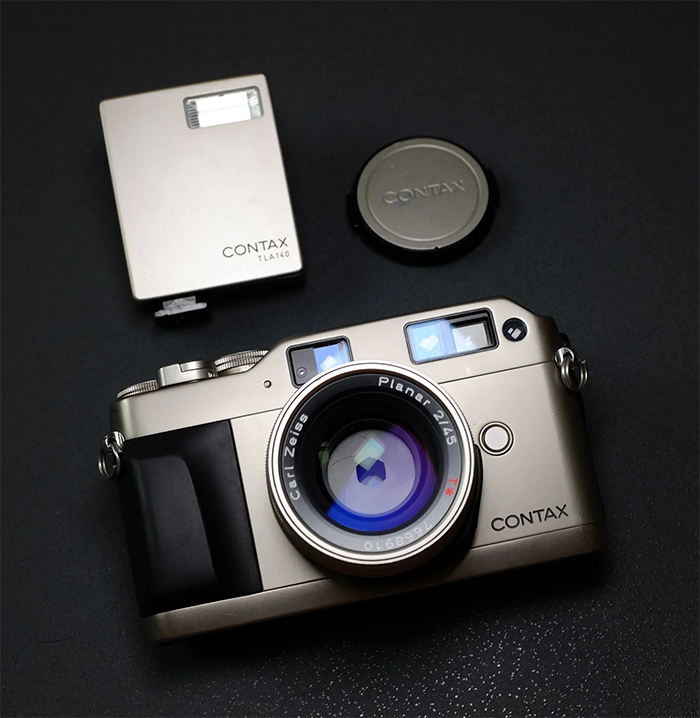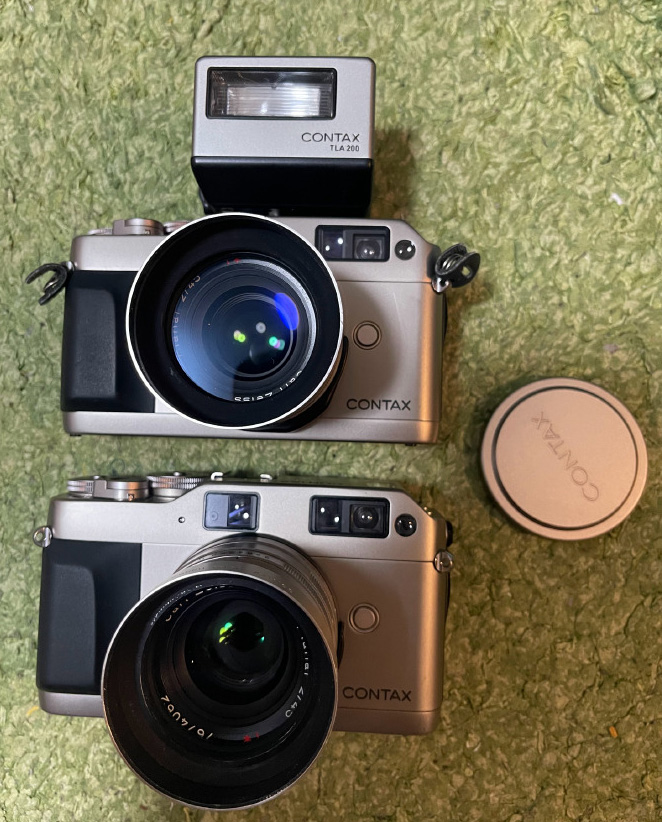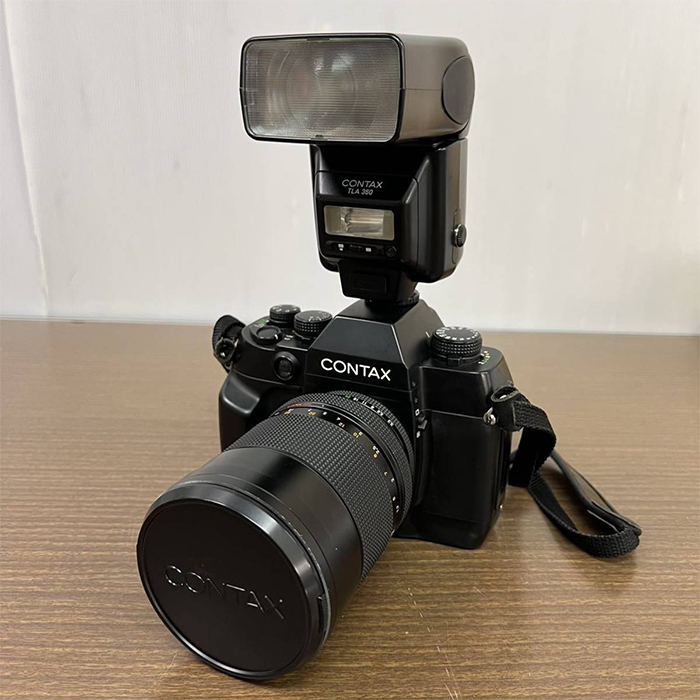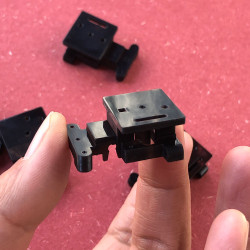Mastering Flash Photography with Contax Film Cameras: A Complete Guide

Contax cameras represent some of the finest achievements in film photography, combining German Zeiss optics with Japanese precision engineering. While these cameras are celebrated for their exceptional lenses and build quality, their flash systems—often overlooked—are equally sophisticated and capable of producing stunning results when used properly. This comprehensive guide explores the intricacies of flash photography with Contax film cameras, from the compact T series to the professional RTS lineup, helping you unlock creative lighting possibilities while maintaining that signature Contax look.
The Contax Flash System Philosophy
Contax approached flash photography with the same precision they applied to lens design. Unlike many consumer cameras that treated flash as an afterthought, Contax integrated flash capabilities as a core part of their photographic system. This is particularly evident in their TLA (Through-the-Lens Autoflash) system, which represented one of the most advanced flash metering systems of the film era.
The TLA system, featured prominently in models like the Contax G2 and RTS III, used through-the-lens flash metering to deliver perfectly balanced exposures. As Juergen Teller, the famous fashion photographer known for his Contax work, once demonstrated, this system could handle everything from delicate fill-flash to dramatic studio-style lighting.
Contax Flash-Compatible Camera Models
1. Contax T Series (T, T2, T3)
The premium compact Contax T series cameras featured:
Flash Sync Speed: 1/125s (T2/T3)
Dedicated Flash: TLA flash units (like TLA140 for T3)
Special Features: Slow sync, fill flash capabilities
Guide Number: 14 (T3 built-in flash)
The T3's flash was particularly sophisticated for a compact camera, allowing both automatic TTL control and manual flash power adjustment. Many users praise its ability to produce natural-looking fill flash in daylight, avoiding the harsh shadows typical of point-and-shoot cameras.
2. Contax G Series (G1, G2)
The revolutionary autofocus rangefinder system featured:
Flash Sync Speed: 1/200s (G2) - remarkable for a rangefinder
Dedicated Flash: TLA200, TLA360 units
Special Features: High-speed sync, wireless TTL control
Guide Number: 20-36 depending on model
The G2's flash system was so advanced that it rivaled professional SLRs, with capabilities like wireless multi-flash setups and precise TTL balancing. The fast sync speed made it excellent for outdoor fill-flash work.
3. Contax RTS Series (RTS II, RTS III)
The professional SLR lineup offered:
Flash Sync Speed: 1/250s (RTS III with vacuum back)
Dedicated Flash: TLA280, TLA360 units
Special Features: Flash exposure lock, strobe sync
Guide Number: 28-36
The RTS III's vacuum film back (which kept the film perfectly flat) worked in tandem with its flash system to ensure even illumination across the frame—a crucial feature for professional studio work.
Understanding Flash Sync Speeds
One of the most critical yet misunderstood aspects of flash photography with Contax cameras is sync speed—the fastest shutter speed that can be used while maintaining full flash synchronization.
Why Sync Speed Matters:
Exceeding the sync speed results in partially exposed frames
Lower sync speeds limit daylight fill-flash possibilities
Different Contax models have varying sync capabilities
Model-Specific Sync Speeds:
Contax T2/T3: 1/125s
Contax G1: 1/100s
Contax G2: 1/200s (class-leading for rangefinders)
Contax RTS III: 1/250s (with vacuum back engaged)
The G2's impressive 1/200s sync speed was particularly noteworthy, allowing photographers to use wider apertures in bright conditions while still employing fill flash—a technique popular among fashion photographers using these cameras.
Creative Flash Techniques for Contax Cameras
1. Daylight Fill-Flash
The Contax TLA system excels at subtle fill-flash to lift shadows in backlit situations. For best results:
Set camera to aperture priority mode
Use -1 to -1.5 flash exposure compensation
Works beautifully with Portra 400 film
2. Slow-Sync Flash
Create dynamic motion effects by combining slow shutter speeds with flash:
Set camera to manual or shutter priority mode
Choose shutter speed around 1/15s-1/30s
Enable rear-curtain sync for trailing light effects
3. Bounce Flash Techniques
With compatible TLA flash units (like TLA360):
Tilt head to 45°-90° for ceiling bounce
Use white card as reflector for catchlights
Works exceptionally well with black-and-white films like Ilford HP5
4. Multi-Flash Setups
The G2 system supports wireless TTL multi-flash:
One flash on camera as master
Additional units as slaves
Perfect for studio-style portraits
Recommended Flash Units for Contax Cameras
1. Contax TLA140 (for T3)
Guide Number: 14
TTL autoflash control
Compact size matches T3 perfectly
90° tilt for bounce capability
2. Contax TLA200 (for G1/G2)
Guide Number: 20
Rotating head for vertical bounce
Compatible with G2's advanced flash features
Includes diffuser panel
3. Contax TLA360 (Professional Use)
Guide Number: 36
Full swivel and tilt capability
External power pack option
Ideal for RTS series
4. Third-Party Options
While dedicated TLA flashes are ideal, some third-party options work well:
Sunpak 383 Super (manual mode)
Metz 45 series (with appropriate adapters)
Vivitar 285HV (for budget-conscious users)
Common Flash Challenges and Solutions
Problem: Harsh shadows with direct flash
Solution: Use bounce flash or attach diffusion material (even a single layer of white tissue paper can help soften the light)
Problem: Red-eye in portraits
Solution: Use off-camera flash cord or enable red-eye reduction mode if available
Problem: Inconsistent exposures with TTL
Solution: Clean camera and flash contacts with isopropyl alcohol; check battery levels
Problem: Flash not firing on older Contax models
Solution: Many Contax cameras require fresh batteries (especially the 6V PX28 types) to maintain proper flash function
Maintaining Your Contax Flash System
To ensure decades-old Contax flash systems continue working reliably:
Battery Care: Remove batteries when not in use to prevent leakage
Contact Maintenance: Clean flash foot and camera hotshoe contacts regularly
Capacitor Health: Exercise flash units monthly to maintain capacitor conditioning
Light Diffuser Preservation: Store flash units with diffusers in place to prevent yellowing
The Future of Contax Flash Photography
While Contax stopped producing new film cameras in the 2000s, their flash systems remain highly capable today. Modern adaptations include:
Using Contax TLA flashes on digital cameras via adapters
Combining Contax cameras with modern strobes using sync cables
Employing wireless triggers for off-camera flash setups
The Contax G2's flash system, in particular, has seen renewed interest among film photographers for its unique combination of compact size and professional features.
Conclusion: Mastering Light with Contax
Flash photography with Contax cameras represents a perfect marriage of precision engineering and creative possibility. Whether you're using a compact T3 for street photography or an RTS III for studio work, understanding your camera's flash capabilities can dramatically expand your creative options.
Remember that Contax flash systems were designed to complement the legendary Zeiss lenses—not compete with them. The best flash photos often use lighting subtly, enhancing rather than overwhelming the natural qualities of the glass.




